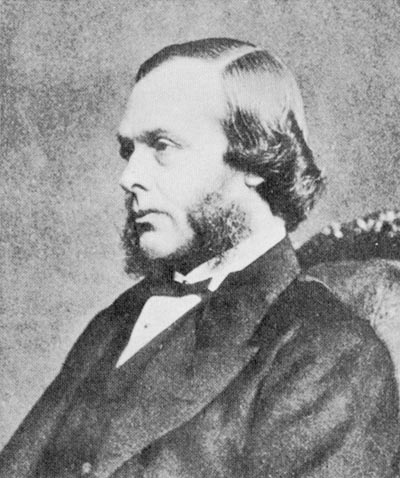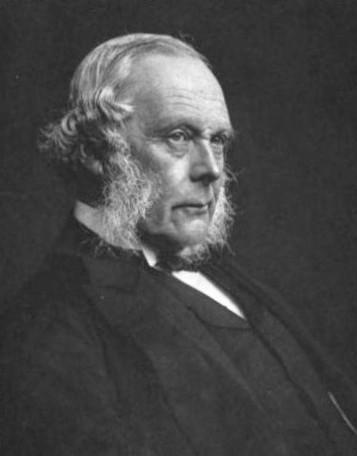<Back to Index>
- Surgeon Joseph Lister, 1827
- Painter Jean-Honoré Fragonard, 1732
- Member of Indian Parliament Babu Jagjivan Ram, 1908


Joseph Lister, 1st Baron Lister, OM, FRS (5 April 1827 – 10 February 1912) was an English surgeon and a pioneer of antiseptic surgery, who promoted the idea of sterile surgery while working at the Glasgow Royal Infirmary. Lister successfully introduced carbolic acid to sterilise surgical instruments and to clean wounds, which led to reduced post-operative infections and made surgery safer for patients.
Joseph Lister came from a prosperous Quaker home in Upton, Essex, a son of Joseph Jackson Lister, the pioneer of the compound microscope. At Quaker schools he became fluent in French and German, which were also the leading languages of medical research. He attended the University of London, one of only few institutions which was open to Quakers at that time. He initially studied the Arts, but graduated with honours as Bachelor of Medicine and entered the Royal College of Surgeons at the age of 25. In 1854, Lister became both first assistant to and friend of surgeon James Syme at the University of Edinburgh in
Scotland. In 1867, Lister discovered the use of carbolic acid as an
antiseptic, such that it became the first widely used antiseptic in
surgery. He subsequently left the Quakers, joined the Scottish Episcopal Church and eventually married Syme's daughter Agnes. On
their honeymoon, they spent 3 months visiting leading medical
institutes (hospitals and universities) in France and Germany. By this
time Agnes was enamoured of medical research, and was Lister's partner
in the laboratory for the rest of her life. Until Lister's studies on antiseptics, most people believed that chemical damage from exposure to bad air ("miasma") was responsible for infections in wound. In fact, bad air was an effect rather than cause of infection, but Florence Nightingale's doctrine of fresh air was still seen as science fiction.
Hospital wards were occasionally aired out at midday as a precaution
against the spread of infection via miasma, but facilities for washing
hands or a patient's wounds were
not available. A surgeon was not required to wash his hands before
seeing a patient because such practices were not considered necessary
to avoid infection. Despite the work of Ignaz Semmelweis and Oliver Wendell Holmes, hospitals practiced surgery under unsanitary conditions. While he was a professor of surgery at the University of Glasgow, Lister became aware of a paper published (in French) by the French chemist Louis Pasteur, showing that rotting and fermentation could occur under anaerobic conditions if micro-organisms were present. Pasteur suggested three methods to eliminate the microorganisms responsible for gangrene: filtration, exposure to heat, or exposure to chemical solutions.
Lister confirmed Pasteur's conclusions with his own experiments and
decided to use his findings to develop antiseptic techniques for
wounds. As the first two methods suggested by Pasteur were
inappropriate for the treatment of human tissue, Lister experimented
with the third. Carbolic acid (phenol)
had been in use as a means of deodorising sewage, so Lister tested the
results of spraying instruments, the surgical incisions, and dressings
with a solution of it. Lister found that carbolic acid solution swabbed on wounds remarkably reduced the incidence of gangrene. He subsequently published a series of articles on the Antiseptic Principle of the Practice of Surgery describing this procedure in Volume 90, Issue 2299 of The British Medical Journal published on 21 September 1867. He also made surgeons wear clean gloves and wash their hands before and after operations with 5% carbolic acid solutions. Instruments were also washed in the same solution and assistants sprayed the solution in the operating theatre. One of his suggestions was to stop using porous natural materials in manufacturing the handles of medical instruments. Lister left Glasgow in 1869, returning to Edinburgh as successor to Syme as Professor of Surgery at the University of Edinburgh, and continued to develop improved methods of antisepsis and asepsis. His fame had spread by then, and audiences of 400 often came to hear him lecture. As the germ theory of disease became
more widely accepted, it was realised that infection could be better
avoided by preventing bacteria from getting into wounds in the first
place. This led to the rise of sterile surgery. Some consider Lister "the father of modern antisepsis". In 1879 Listerine mouthwash was named after him for his work in antisepsis. Also named in his honour is the bacterial genus Listeria, typified by the food-borne pathogen Listeria monocytogenes. Lister moved from Scotland to King's College Hospital, in London, and became the second man in England to operate on a brain tumor. He also developed a method of repairing kneecaps with metal wire and improved the technique of mastectomy. His discoveries were greatly praised and he was made Baron Lister of Lyme Regis in 1897 and became one of the twelve original members of the Order of Merit and a Privy Councillor in the Coronation Honours in 1902. Among his students at King's College London was Robert Hamilton Russell, who later moved to Australia. In
life, Lister was said to be a shy, unassuming man, deeply religious in
his beliefs, and uninterested in social success or financial gain. Lister retired from practice after his wife, who had long helped him in research,
died in 1892 in Italy, during one of the few holidays they allowed
themselves. Studying and writing lost appeal for him and he sank into religious melancholy. Despite suffering a stroke, he still came into the public light from time to time. Edward VII came down with appendicitis two days before his coronation.
The surgeons did not dare operate without consulting Britain's leading
surgical authority. The king later told Lister, "I know that if it had
not been for you and your work, I wouldn't be sitting here today." Lister died on 10 February 1912 at his country home in Walmer, Kent at the age of 84. After a funeral service at Westminster Abbey, he was buried at Hampstead Cemetery, Fortune Green, London in a plot to the south-west of central chapel. Lister was president of the Royal Society between
1895 and 1900. Following his death, a Memorial Fund was set up in his
name to honour his memory. Several lectures and statues were funded or
established in this way. Eventually, in 1924, the Memorial Fund was
used to establish the Lister Medal, which became the most prestigious prize that could be awarded to a surgeon. A British Institution of Preventive Medicine, previously named after Edward Jenner was renamed in 1899 in honour of Lister.
Two postage stamps were issued in September 1965 to honour Lister for his contributions to antiseptic surgery.
Lister
is one of the two surgeons in the United Kingdom who have the honour of
having a public monument in London, Lister's stands in Portland Place (the other surgeon is John Hunter). There is a statue of Lister in Kelvingrove Park, Glasgow, celebrating his links with the city.
A building at the Glasgow Royal Infirmary was named in his honour to recognise his work at the hospital.
The Discovery Expedition of 1901-04 named the highest point in the Royal Society Range, Antarctica, Mount Lister.